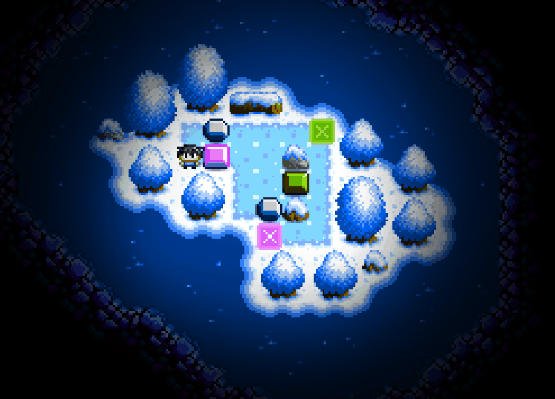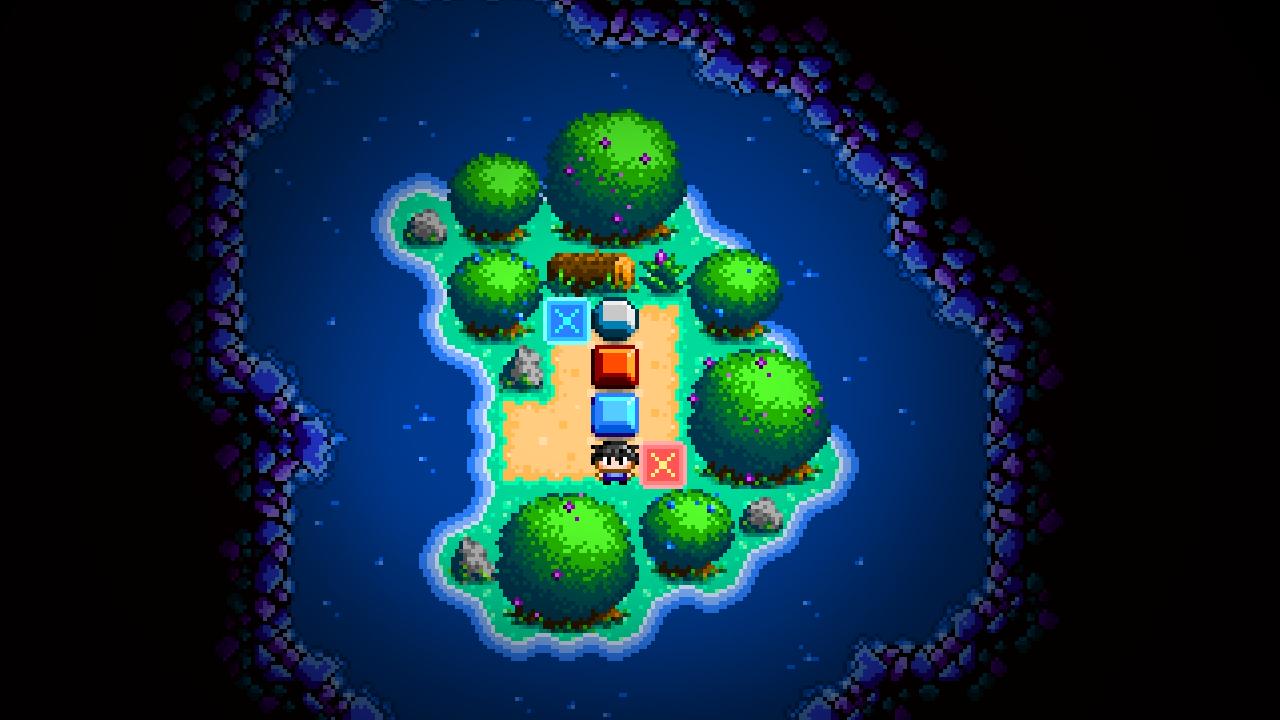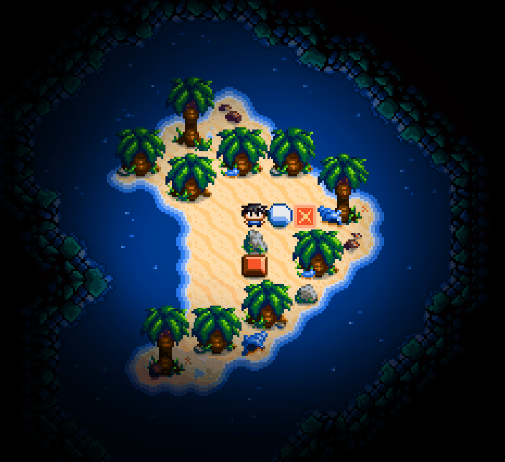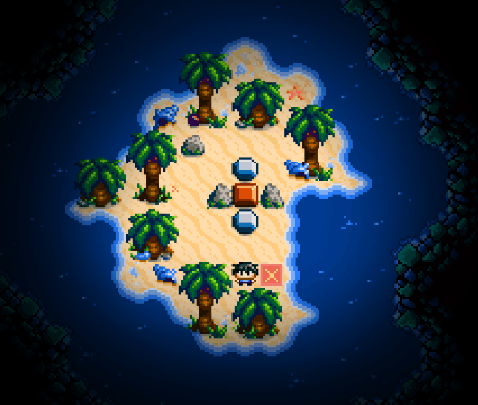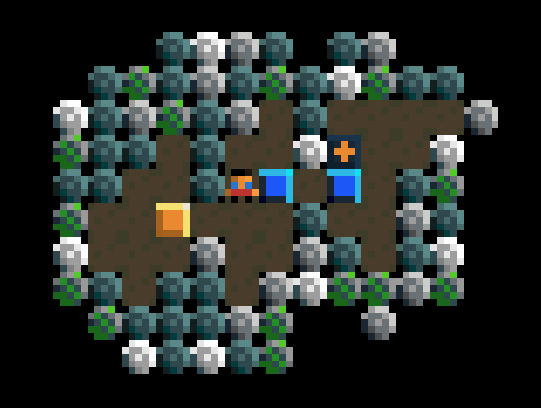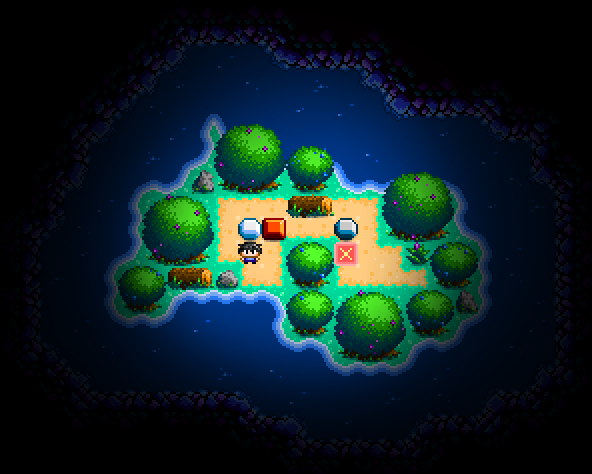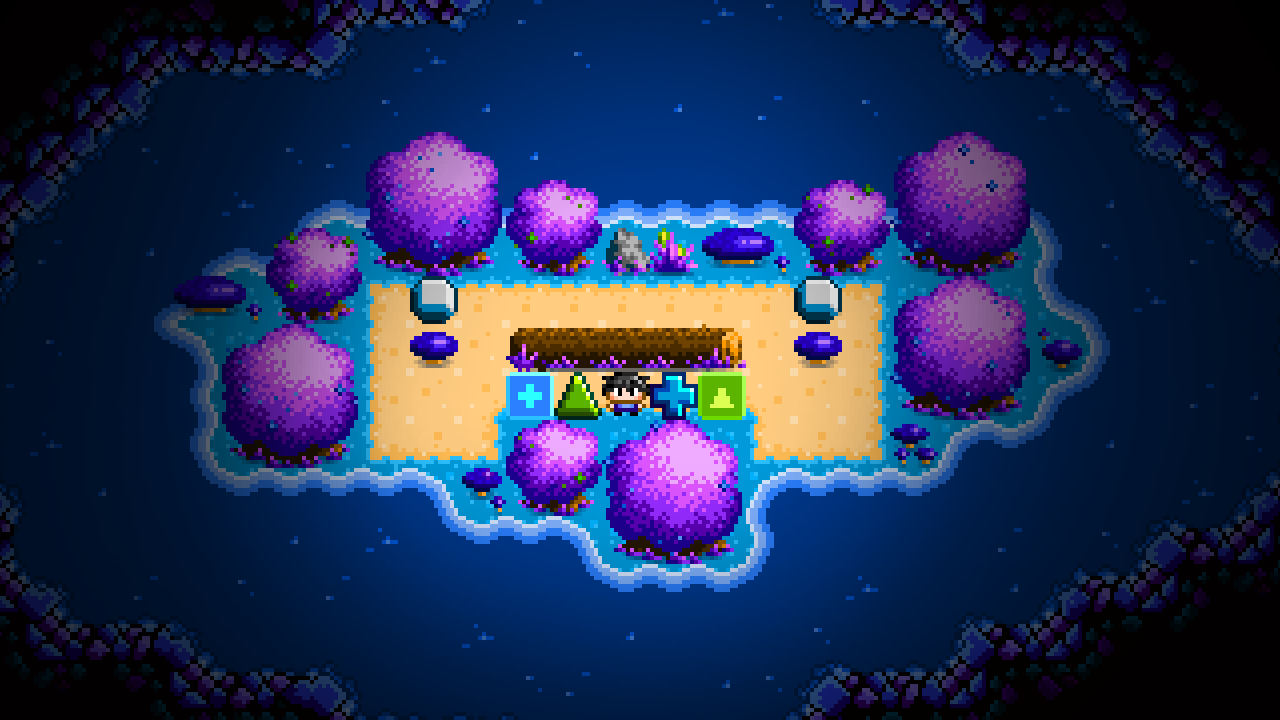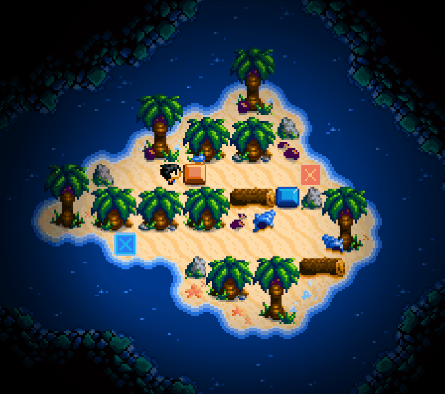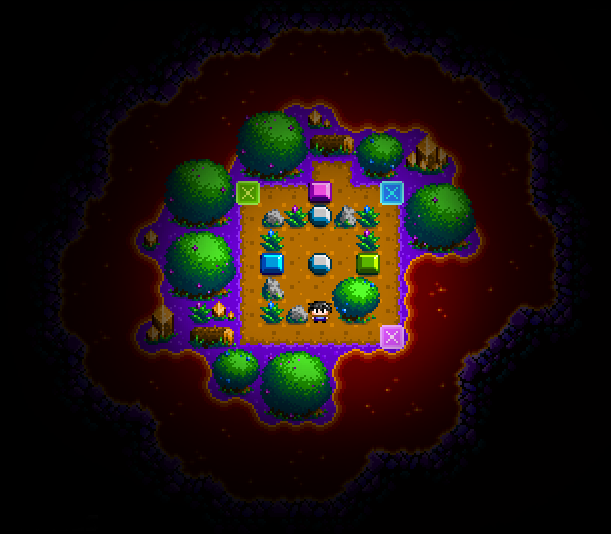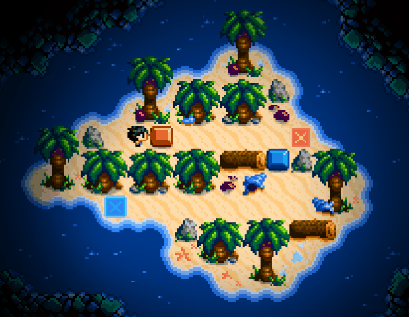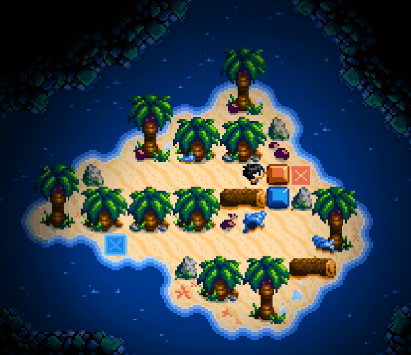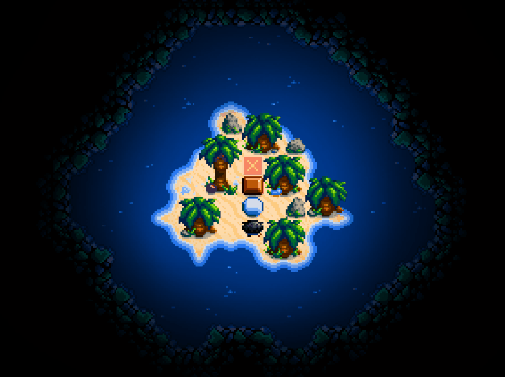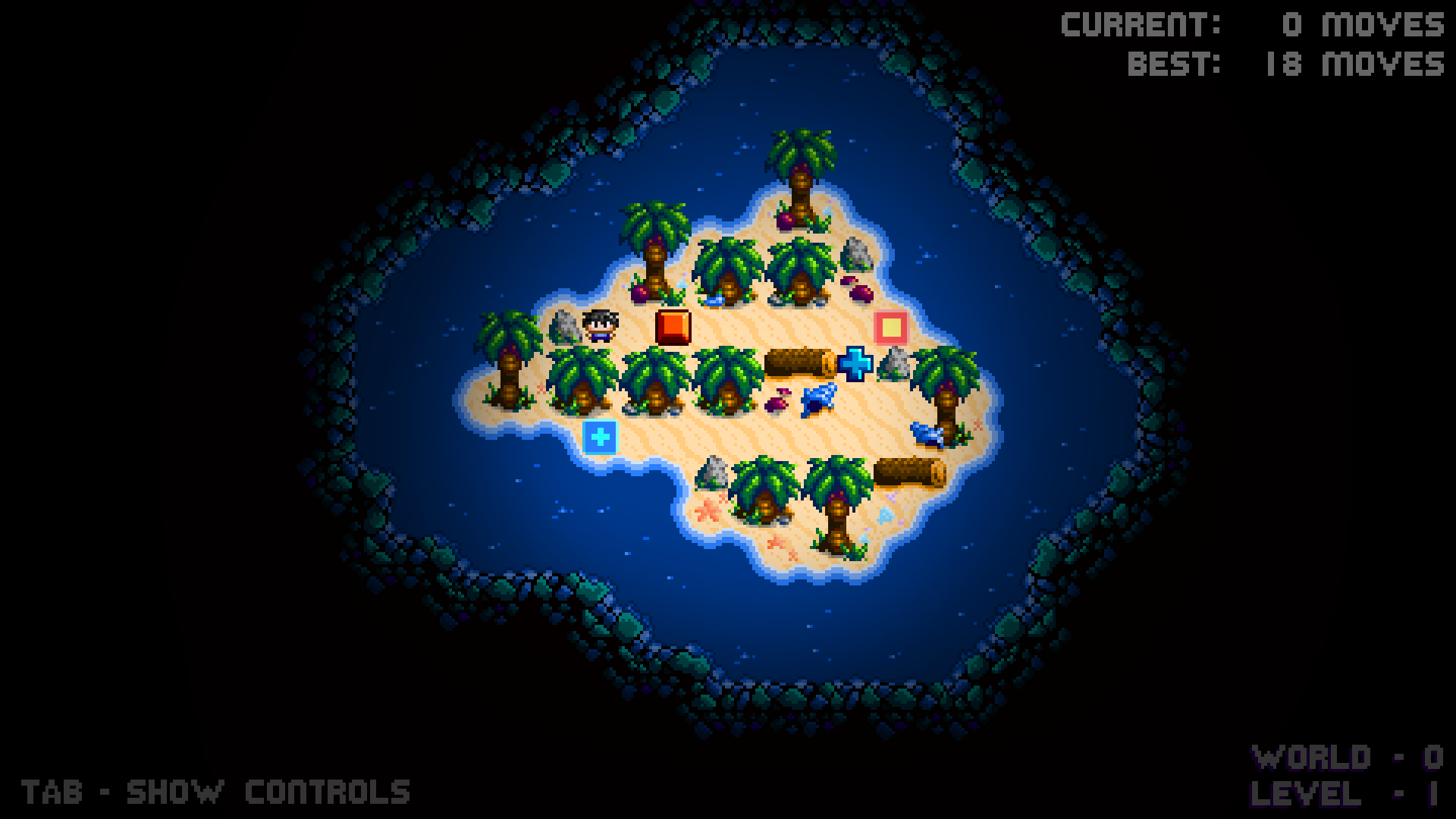This article has been featured on the front page of GameDeveloper.com and originally posted on my blog here. This is the fourth in a series of game design articles about Puzzledorf. You can see the full series here.
Playtesting is fundamental to Game Design. The aim is to observe people playing your game to so that you can identify areas of weakness in your design, or bugs, and methodically improve it. There are 3 keys I’ve found to help you playtest your games which I used extensively in playtesting Puzzledorf.
The Purpose of Playtesting
Before we get into the 3 keys of playtesting, I want to cover something I feel very strongly about. I feel strongly about it because I think that getting this right leads to better games, and to me this is the purpose of playtesting.
In game design circles, it’s common to hear people say,
“You’re not designing games for yourself. You’re designing them for other people.”
I believe that’s only half true. I make games because I have a passion and a vision for an idea, and I won’t be happy until I’ve brought that vision into reality. So from one angle, I’m making the game for myself because I want to play it. But I also want other people to share that joy. So I think the reality is you need to keep both in mind; yes, make it for yourself, but also remember it needs to be fun for others.
You can get too caught up in making a game you think is fun, doing all of the testing yourself, but forgetting to do product testing with actual customers. Then you release the game and find no one wants to play it. That’s a bad situation, but I don’t think the above statement is the solution. It could be interpreted as saying, “let the customers design it for you and change it to whatever they want.” But do they always know what the game needs?
Your role, as a designer, is to observe people playing your game, and then decide what the game actually needs. Not every player will have the same opinion, so you have to decide what’s best for your game.
I’m an absolute believer you should be designing a game you’re passionate about, and when you do, great things are more likely to follow. To design a great game, I think you need at least one person who has a vision, and the passion and drive to follow it through to the end, keeping the team focused on that vision. How you get there might change, but don’t lose sight of the vision.
But here’s where it gets messy. You might have a vision, but you don’t always know how to get there. This is where play testing comes in. I would rephrase the earlier statement like this:
“Design a game you’re passionate about but don’t lose the vision. Use other people to help you refine it.”
It’s an important difference. You’re not getting playtesters to design the game for you – you should know what you want to achieve. But we can only know what’s fun when it’s in the hands of others, so we use playtesting to refine ideas. Otherwise you run the risk of, every time people play the game, you make whatever change comes out of their mouth, and eventually lose the original vision.
Puzzledorf is a good example. I knew I wanted to make a puzzle game, and I wanted people to push blocks. What I wasn’t sure about was, “What makes a good puzzle?” So I used play testing to refine my puzzle design and to balance the game’s difficulty, to make sure the design worked and was communicated properly to the player. My play testers weren’t telling me what my game was; they were helping me to figure out where it worked, and where it didn’t.
The 3 Keys
- Observe
- Test
- Measure
This is similar to how you would conduct a science experiment. Game design can be turned in to a discipline with methodical rules to follow that, when combined with your creative ideas, helps produce consistent quality. Let’s break down these rules for play-testing.
Observe
When I first started playtesting Puzzledorf, for a long time I just watched people play the game. I also refused to help them, as I won’t be there to help a customer with the final product, so if you help them, it’s not a true test. This led to many unique observations, helping me understand how people interact with my game, and I was able to identify potential area’s of weakness from those observations.
Once I identified area’s to work on, I then did further play testing for those specific elements.
Observing people use your game is a critical first step in playtesting. Your primary goal is to see if the game design works as expected. Start with general observations about your game and watch how people interact with it. See if anything stands out. Ask yourself questions like, “Are they playing as intended?” “Do they seem confused? About what?” “Is the game’s objective clear?” “Is the difficulty correct?” “Is that ledge too high?” And so on.
As the game gets further into development, you should apply a more methodical approach and observe specific elements that need further testing and refining, which we’ll discuss later in the article. An example, however, would be observing players attempt the jumps in a platforming game to determine appropriate heights and distances for those jumps.
In my puzzles, one thing I watched was to see if people could learn the rules of the game without my help.
Test
Testing comprises of two elements.
- Initial tests and observations to identify weaknesses / bugs
- Specific tests to refine key areas
The initial tests are part of that first observation, where people just play through the game and you see how the overall design is working.
The later tests are when you have made changes and are then testing it either on the same people or fresh players to see if the changes worked.
You should be testing every individual element of your game. Are there ledges to jump on? Test their height and distance. Do you have to kill enemies with a sword? Get players to attempt it. Do you have a shield to block bullets? Get players to block bullets. Are there special abilities and combo moves? Get players to try them.
Also, don’t forget that you should be doing some of the initial testing yourself to work out early kinks, but don’t rely on yourself as a play tester. Use others to help you refine the game.
Here’s an example from an early proto-type.
This was an early design for a level. I did some early play tests with others, and felt something was lacking. What I found was that, there were parts of the level that were never used, and the puzzle was more fun when I removed them. The parts in red are never used.
So then I redesigned the level like this:
When I did that, people had more fun playing the game. In the end I decided the solution to that version was a little too obvious for my taste so I made further changes to the level. This is what it looks now like in Puzzledorf:
I flipped it upside down then made a few minor changes. Now every space is used. I talk more about how I refined my puzzles in my article on Puzzle Design.
Here’s something else important to remember:
Every time you make changes, no matter how small, test them.
There is a game design theory called the wobbly jelly. The theory is this:
Every time you make a change, no matter how small, it wobbles the jelly (the jelly being your game). The more changes you make, the more the jelly wobbles, and the more likely something is to break. So often a small change, that seems like it shouldn’t break anything, affects something small and completely unrelated.
I have experienced this myself many times. Usually I remember to test, but every now and again there’s still something you miss, so be thorough with testing changes.
When you are testing, test as many people as you can. You might test a small group, make changes, then test the same group again to see if the changes worked, or you might test a fresh group. I like to keep people who haven’t tried the game yet as a backup for someone I know will have a fresh experience.
With a puzzle game, for example, one person may find a particular puzzle very hard, even impossible, for some unknown reason, whereas on average the difficulty may be just right. The more you can test with the better, but 5 people is a good minimum to start with.
Make sure you tested every element of the game and that some people played through the whole game. This is particularly important for difficulty balancing. If only some players play the early levels and some players play the later levels, you don’t have a consistent comparison of how a single player experiences the entire game. You need some players to do that to see how they progress through the challenges and difficulties. However, for small changes, do test specific components separately without always doing an entire play through.
Don’t be precious with your idea’s. No game is perfect on the first go. View each area that’s not working properly as an opportunity to improve the design and make your best game yet.
Measure
This is really important but easy to miss. You might be tempted to just watch people, then make changes from memory. Don’t do that. Instead, you should be recording observations and key data.
Have a writing tool nearby and jot notes as you observe the player.
If you’re testing for specific and measurable things, such as, how many players died on level 3, or how long does it take each player to complete a level, record such things in an appropriate way. For level time completion, I would use a spreadsheet. Many things could probably be measured on a spread sheet, but a notepad or word document is also fine. Use whatever works, so long as you are tracking your data, which usually means tracking numbers.
How many people died at the waterfall in level 3? How many people died at the waterfall after you made changes? How many people passed the first level? etc.
With Puzzledorf, I balanced difficulty by measuring how long it took each player to complete a level, then got an average time. This was made harder by some testers not playing through the whole game. For more on difficulty balancing, read my other articles.
What Are You Testing
What you test and measure differs with each game, so I am going to give you 3 helpful questions to identify your area of need. Remember these words:
- Understanding
- Difficulty
- Improvement
We’ll now turn those words in to questions.
Does The Player Understand…
What sort of things are in your game? Is it a puzzle game? If it is, does the player understand the puzzle? Notice I didn’t say can they solve it – but can they understand how to begin solving it?
Any good puzzle, no matter how difficult, should give clues to the player how they can begin trying to solve it. For example, Puzzldorf is a block pushing puzzle game. So I helped players understand that they had to push the blocks to the right location to pass the puzzle. Finding the correct path is up to them. I talk about how I achieved this in my article on Tutorial Design, but the below image gives an example of Tutorial 1. The player is forced down a guided path, forcing them to learn the rules of the game with positive reinforcement.
Does your player understand the individual components of your game? You’re not just looking for general understanding but you want to break it down to the smallest, individual elements.
Does the player understand the controls? Do they understand how they can die? Do they understand how they can win?
Keep reviewing this as you observe. If a player seems confused, take note and write it down somewhere (measure it). If you make changes, get that person or another to try it again and see if that element is still confusing.
Is The Difficulty Appropriate
Notice I didn’t say is the game too hard. Some games are successful because they are hard, but is it appropriate? Don’t just take this as a general statement for the difficulty of the overall game. Apply it to individual elements.
Is the boss of level 1 too hard?
Is that section of the level too difficult? Should the jumps be smaller?
Is that enemy’s behaviour too hard to predict?
Let’s say there is a certain bottomless pit where every player falls to their death. Does it benefit the game, or is it just bad design? The right kind of difficulty motivates the player to continue. Something that is hard, where the player needs to improve their motor skills, might be a fun challenge, so long as the player feels like the mistake is their fault and maybe they can improve.
Bad difficulty is when the player struggles to complete a challenge due to bad design, eg, it’s impossible not to fall into bottomless pit. In such cases, the game feels unfair and the player gives up.
In the bottomless pit scenario, should there be some sort of clue that there is a bottomless pit, or is it the players fault for not realizing? You have to consider these questions.
Seeing how many times a player attempts to overcome a challenge before giving up is a good indicator of if it is working well or not. In Puzzledorf, some of the early puzzle designs were too complex and vague. It was the wrong kind of difficulty – they got stuck because they were unsure what to do, not because it was a good challenge. Some of those levels were redesigned and others removed. Read more about Puzzle Design in Puzzledorf and Difficulty Pacing if you want more examples.
Below is one of the late game puzzles. It’s hard, but not overwhelming to look at. Someone who’s played up to this point knows the general idea of what they need to do, it’s just a matter of how to get there.
You shouldn’t be precious with your idea’s but instead be willing to admit when things could be improved or removed. Be excited about the opportunity to make your game better.
Can The Design Be Improved
If a player doesn’t understand something, or they play the game differently to how you intended, never assume the player is wrong. Assume instead that your design might need improving.
Remember, when you release this game, you won’t be able to stand there and explain how to play. The game needs to be self explanatory. With that in mind, as you observe people playing the game, you need to be looking for clues about what may or may not be working, then be prepared to test and measure those elements.
This is the most critical part of the process, the question that leads to all other questions: Can the design be improved?
If I wasn’t willing to look critically at the above puzzle prototype, and refine the design, the game wouldn’t be half as good as it is today.
3 Key Areas to Review
There are 3 key area’s of your game to review. Keep this in mind to break your game into different parts to observe, test and measure. Remember these words:
- Goals
- Challenges
- Navigation
Let’s break them down. You can apply the observe, test and measure principles and the questions we discussed to these 3 area’s.
Goals
Does the player understand the goals of the game? This can be interpreted as the overall goal of the game, such as saving the Princess from the Evil King, and the smaller individual goals, such as, “Do they know they need a fire sword to melt ice?”
This can be broken down as small as you like, right down to, “Do they understand how to solve this type of puzzle, by putting the red ball in the red hole?” Remember that there should be some type of clues throughout the game to assist the player to know what they have to do. A mission objectives list on the pause screen is an example of this.
A few things I did to help teach the goals in Puzzledorf. When you stand next to something interactive, it flashes.
When you push the block on to the right spot, you get a particle explosion and a reward sound that makes the player feel good.
And then I test the game and watch new players solve as many levels as they can so I know that they understand how to play. If they pass the tutorial and the first 3 levels, they obviously have a basic understanding. Read more on teaching through design in my earlier articles.
So, what are the goals of your game? Does the player understand them? Is the difficulty appropriate in completing them? Are there aspects that can be improved?
Challenges
Challenges are literally the things that try to stop the player from reaching the goal. Again these can be broad and general, but should also be broken down to the smallest and most specific examples. In a platformer this could be the space and height between jumps. Are they the right height? Does the player understand how to jump up there? Is the difficulty appropriate? Could it be improved in anyway?
It could be you need to help the player learn how to defeat certain types of enemies because they’re not understanding it, eg, green bullets kill green enemies, blue bullets kill blue enemies, but the player keeps trying to use green bullets on blue enemies. How can you help them understand to use the right bullets?
If it’s a block pushing puzzle game, does the player even understand that they can push the blocks, or can’t push certain blocks? Do they know what to do with the blocks when they push them? Do they know why they are pushing blocks?
Again, my article on Tutorial Design goes over this in more detail, but here’s a quick look at the tutorials.
Tutorial 1 forces you to push blocks, so you learn how to do that, and with the positive reinforcement mentioned earlier, you realise that you have done the right thing when you push the block on the cross.
Also, when the blue block starts flashing, you realise you can push other coloured blocks.
Tutorial 2, below, teaches you that you can’t push 2 blocks, since most people are going to first try and walk straight up. You then also realize you have to sometimes walk around blocks, to push them from another angle, to get were you want to go.
So very quickly in 2 tutorials, without words, players have learned the challenges and goals.
Does the player understand the challenge in your game? Is the difficulty appropriate? Could the design be improved? After you’ve changed something, go back and test it on another player. Is it working better now?
Navigation
This is a broad subject, but it involves anything to do with how the player navigates the game. The key one is the controls. Does the player understand the controls and are they appropriate?
But it’s also how the player explores your game world and how they navigate the menu screens. Does the player know how to start a new game from the main menu? Do they understand how to switch individual options on and off? Do they understand how to leave the first town and enter the wild lands? This also includes finding things within the game, such as finding a shopkeeper and navigating the game menu.
In Puzzledorf’s tutorials, aside from how they force the player into learning the rules of the game, the controls are displayed on the left of the screen. If the player presses TAB on the keyboard, they can hide them, but they’re always there if the player wants them.
If you haven’t read my other Puzzledorf Reflections articles, you can see the full series here. There are more planned to be written soon.
Or if you want to learn more about Puzzledorf, you can check the website, Indie DB profile, or check out my blog. Or...

